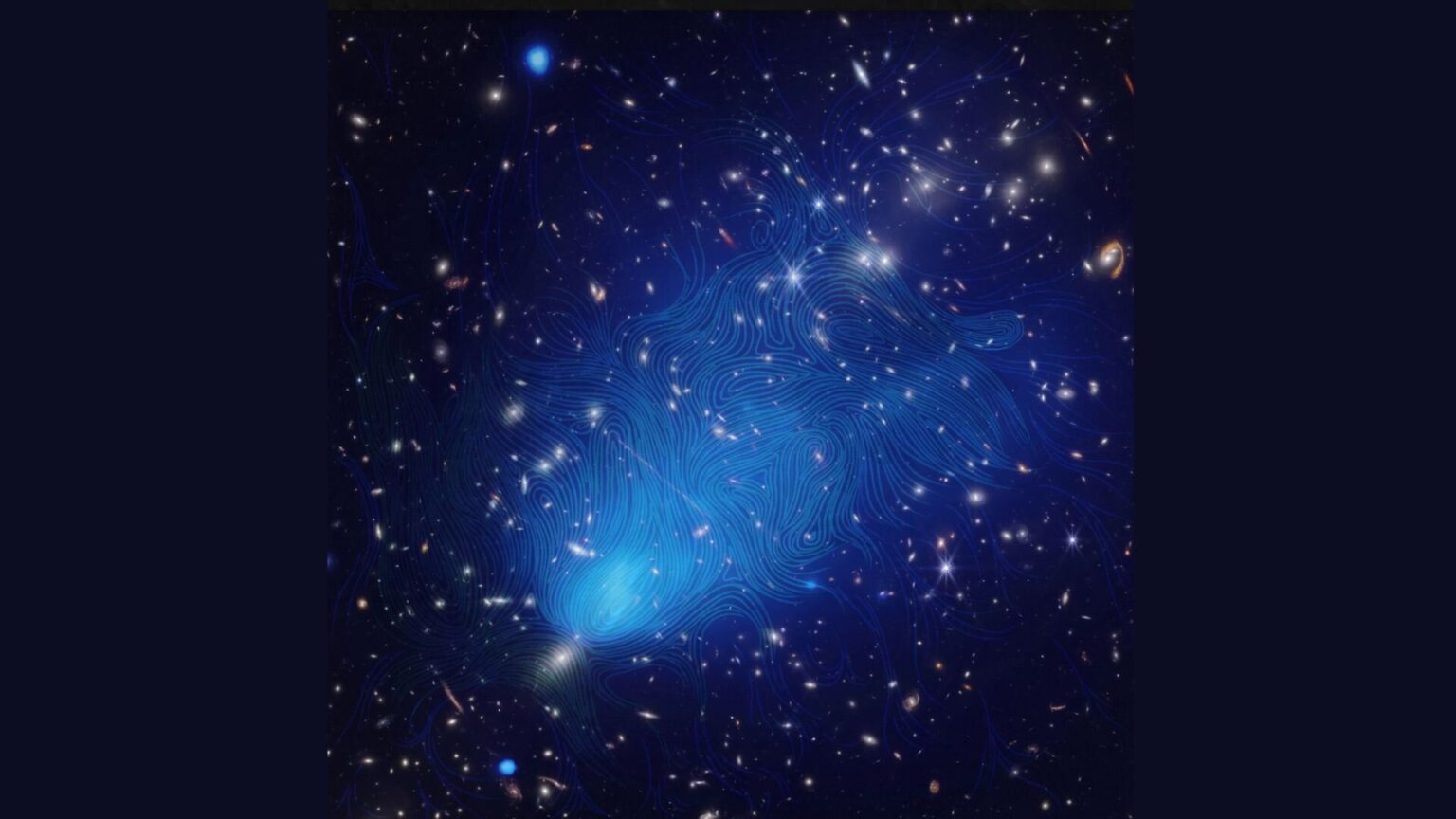Scientists have studied some of the largest magnetic fields in the universe. They permeate the gas and dust that fill the inner medium of galaxy clusters. A method called synchrotron intensity gradient (SIG) made it possible to assess their true state.

Galactic clusters and their medium
A recent study published in the journal Nature Communications sheds light on some of the most extensive magnetic fields in the universe. They exist in the inner medium of galactic clusters. A new method for estimating electron velocities helped to study them.
Galaxy clusters are one of the largest structures in the universe. They extend over millions of light-years and contain hundreds and thousands of star systems similar to the Milky Way. And they are not just nearby, but actively interact, constantly exchanging gas.
A more detailed study of the clusters shows that they are actually immersed in giant clouds of gas, which are not tied to any single system. They are constantly mixing and all this together is called an intracluster medium.
This is where some of the largest magnetic fields in the universe arise. They stretch for hundreds of thousands and millions of light-years, although it is quite difficult to see them at this distance. It is believed that they play a crucial role in the processes of movement of matter and energy in the intracluster medium due to a process called magnetic turbulence.
Magnetic fields and synchrotron radiation
Magnetic turbulence is the chaotic movement of particles of matter as a result of the action of magnetic fields. The new study is mainly devoted to its research. For this, they used a method called synchrotron intensity gradient.
Most of the high-speed particles that we perceive as radiation flows are formed as a result of thermal processes. Atoms receive a lot of energy, some of it goes to electrons and they fly away in the form of wave particles.
However, another mechanism is also possible, when negatively charged electrons receive energy directly from magnetic fields without the intervention of thermal processes. Such radiation is called synchrotron radiation. Among other things, it is formed in the intracluster medium of galactic clusters.
Synchrotron intensity gradient
The main mechanism of the occurrence of synchrotron radiation in an intracluster medium is precisely magnetic turbulence. Atoms and electrons, under the influence of magnetic fields, make chaotic movements across the lines of force. A collision with cosmic rays is superimposed on this movement. And all this information in the form of noise is stored in those radio waves that reach us.
Previously, it was considered absolutely meaningless. But the new method made it possible to extract an important component from it. Specifically, how the velocity of electrons changes near the magnetic fields penetrating the intracluster medium. This is the intensity gradient.
Thanks to this, scientists could find out that the processes of magnetic turbulence are not as developed in galactic clusters as previously thought. At the same time, scientists are confident that further use of this technique will allow them to learn more about magnetohydrodynamic phenomena.
According to phys.org
Follow us on Twitter to get the most interesting space news in time
https://twitter.comne/ust_magazine


